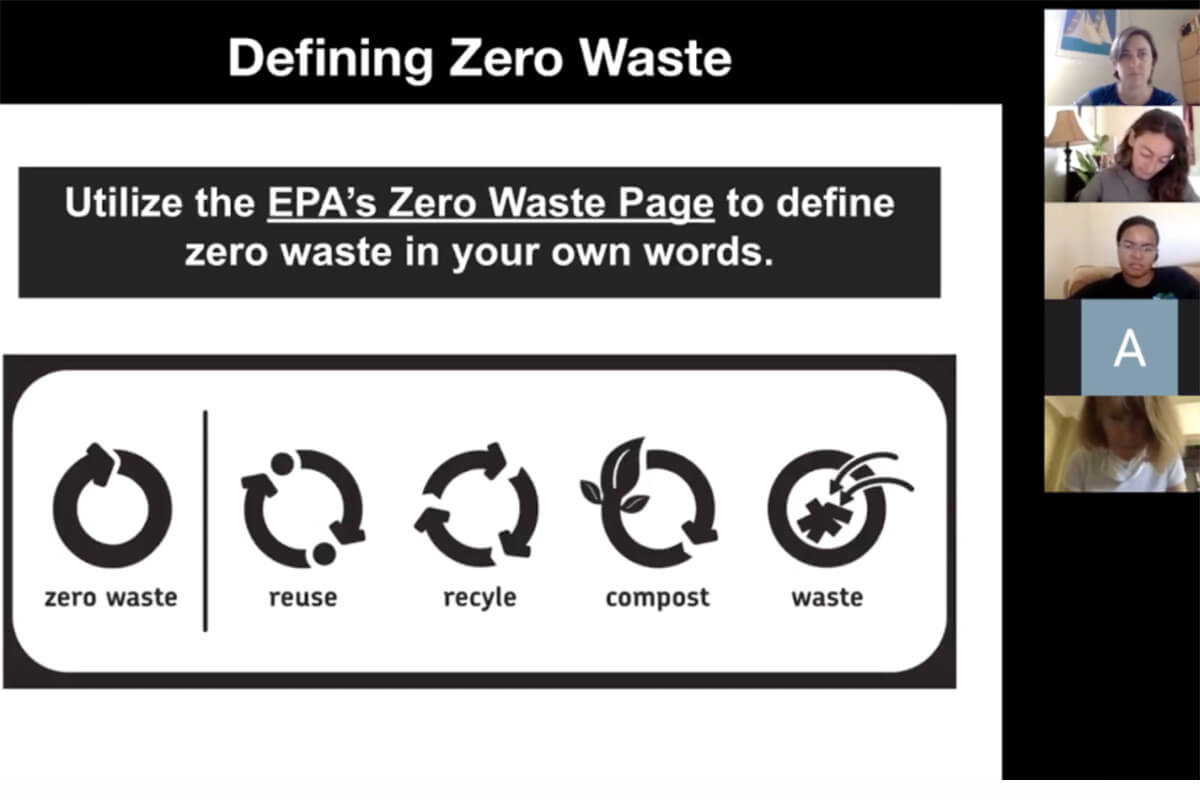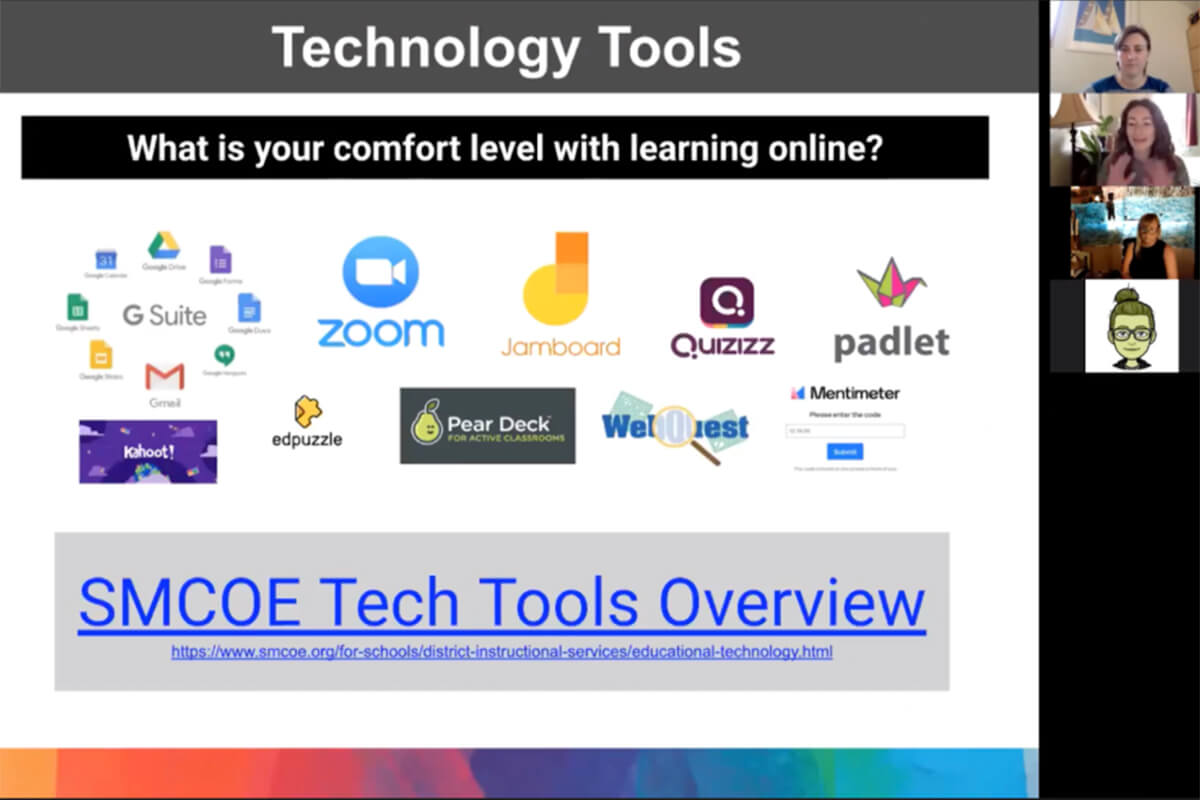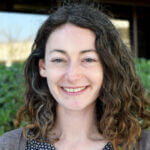When I entered the Tree Rooms for the first day of the San Mateo County Office of Education’s (SMCOE) San Mateo Environmental Learning Collaborative (SMELC) institute in summer 2017, I knew some of what to expect. I knew I would be taking a break from my responsibilities as a summer camp manager with the HEAL Project to meet with teachers and support their development of units of study focused on the environment. But I didn’t realize I would be getting even more than I had anticipated—and then some.
That first summer I attended the SMELC institute, I learned how to integrate California’s Environmental Principle & Concepts (EP&Cs), new teaching tools, and science standards into the curriculum at the HEAL Project’s San Mateo County School Farm. The lead facilitators of SMELC were expert facilitators, guiding participants through a comprehensive and cutting-edge way of teaching that transforms students into solutionaries. The mentorship and professional development I received as a community partner went a long way toward helping me start to adapt our farm curriculum to encompass taking action on environmental issues.
As a community partner representative with the HEAL Project, the highlight of SMELC for our organization was how it would affect student outcomes regarding school field trips. The students who came to the San Mateo County School Farm as part of their SMELC units of study had questions that demonstrated their deep understanding of the problems and solutions related to agriculture and science. I was able to work directly with these engaged students to address topics they had discussed in class beforehand, such as the impacts of plastics on soil and what composting had to do with food waste. These students were interested in how soil connected to compost and food waste and then to themselves. Seeing the potential of integrating environmental literacy into curriculum like this drew me toward wanting to learn more about how sustainability could be an asset in K–12 education.

For the next two years I happily continued to participate in SMELC as a community partner and to support teachers in developing and implementing their units of study to include meaningful experiences with the HEAL Project. I also continued to grow and expand the programmatic offerings of the HEAL Project to align with the Next Generation Science Standards (NGSS), the EP&Cs, and the broader environmental sustainability efforts within the county. Through all these efforts, my experience and interests began to shift to wanting to work more directly with schools to create solutionary action on their own campuses. Luckily for me, an opportunity came about to help schools and districts bring sustainability to their operations through waste reduction programs led by a partnership between SMCOE and the San Mateo County Office of Sustainability.
In March 2020 I joined SMCOE’s Environmental Literacy and Sustainability Initiative as the green facilities and operations analyst, a role that is funded by the office of sustainability’s waste reduction division. The role centers around providing technical assistance to school leaders who do sustainable campus projects, with an emphasis on zero-waste efforts. I was excited to dive into the campus side of the work at SMCOE, and I quickly realized that my background in waste management, food systems, nonformal education, and environmental sustainability was going to be put to work helping school administrators tackle these issues.
Part of this transition to being a SMCOE team member meant getting to work on the facilitation team for the SMELC teacher fellowship program’s zero-waste topic track. After years of participating as a community partner, I was excited to take on this new role and guide teachers through an institute that had, in so many ways, shaped my own educational philosophies.
As COVID-19 shelter-in-place orders took effect in March, the challenges I had anticipated grew as everyone, including myself, headed into the uncharted territories of distance learning for K–12 students. For me, this meant not only stepping into a new role as cofacilitator, but doing so in a vulnerable online setting. For the facilitators of SMELC, this new education landscape posed questions on multiple levels.
How would an institute that was always so much about hands-on project-based learning translate to remote?
In many ways, project-based learning focused around the environment lends itself well to a reimagined education system. Project-based learning works well for small group work or independent learners. It engages many types of learners when it weaves together multiple subjects and views problems from different angles—math, science, reading, and art are all used as tools to analyze issues. In particular, many environmentally-focused lessons work just as well in an asynchronous self-guided format, such as learning from home, which gives teachers options to address environmental topics during remote learning.
At the initiative we focused our curriculum development on student-driven tools that would work in both distance-learning and in-person formats, such as webquests, field research (or audits), and narrative case studies. For the topic of waste, these tools are student-centered and hands-on, and they provide relevant, authentic opportunities for students to understand the fundamentals of how the waste system works and how it applies to their everyday lives and local communities.
One goal of this year’s SMELC summer institute was to demonstrate to teachers what teaching our curriculum online could look like. A big part of that was to expose them to the diverse range of remote-learning tools available to educators. For me, as a facilitator, this meant stepping into the role of learner in order to get familiar with resources like Jamboard, Mentimeter, and Padlet. As such, we had to model remote teaching knowing that not everything was going to go perfectly the first time and that we would be learning as we went.
Even though adapting to the remote format was a challenge, we experienced moments that allowed the teachers to connect in ways that we had not been able to before. For example, when students learn at home, what we consider the “campus” of school makes a big shift. Developing a home-waste audit for our students gave us the opportunity to think critically about environmental and social justice issues so that the shift from a school campus to a home campus could be made in an equitable way. For instance, one teacher planned to have students consider their home waste through a lens of cultural difference as well as environmental responsibility. Teachers of younger grades considered adapting a home-waste audit to include more examples of how to reduce waste in ways that would not be costly for families. A big goal for zero-waste educators is to translate what students learn about reducing waste at school to the home setting. Remote learning is providing a unique opportunity for students to make this leap in behavior change, especially when done with cultural responsiveness in mind.
Will teachers be able to guide their students toward solutionary actions in a remote learning environment?
As the SMELC teacher fellowship program evolves, I know it will continue to help teachers build resilience into our education system. Building a community of teachers who are passionate about environmental literacy and equipping them with the resources they need to succeed with remote learning goes a long way toward engaging students with sustainability topics in solutionary ways. Already in the 2020–2021 school year I have seen teachers leading policy advocacy, student advocacy, and action projects such as remote beach cleanups, zero-waste challenges, and providing waste receptacles along popular walking trails.
As we move forward in this school year, I am impressed by and grateful for the educators who continue to teach environmental literacy. COVID-19 has shown everyone what an emergency looks and feels like. However, even in an emergency we cannot afford to ignore climate change and environmental degradation. During a check-in with institute participants after this year’s summer institute, a teacher shared that he was thinking ahead to when his kids would ask him what he did during this climate emergency. He was proud to say he could tell them that participating in SMELC and leading a unit of study on waste had felt like an important part of what he could do to make a difference.




